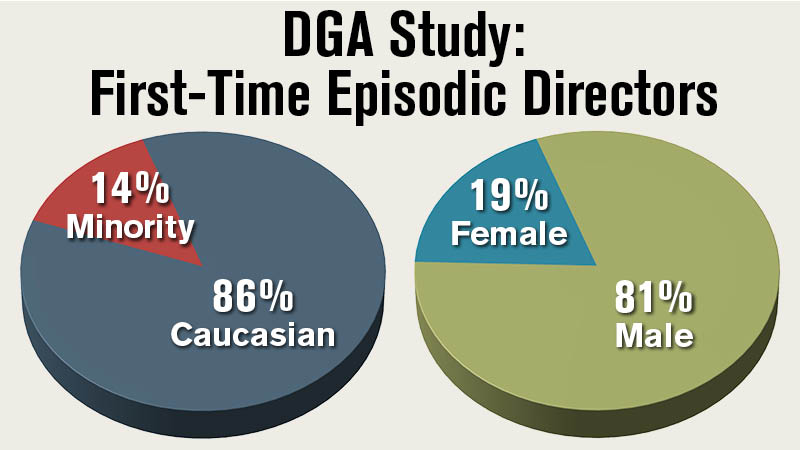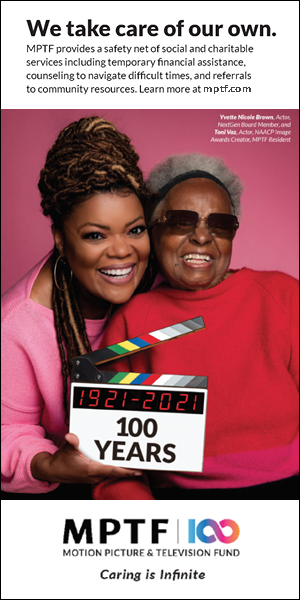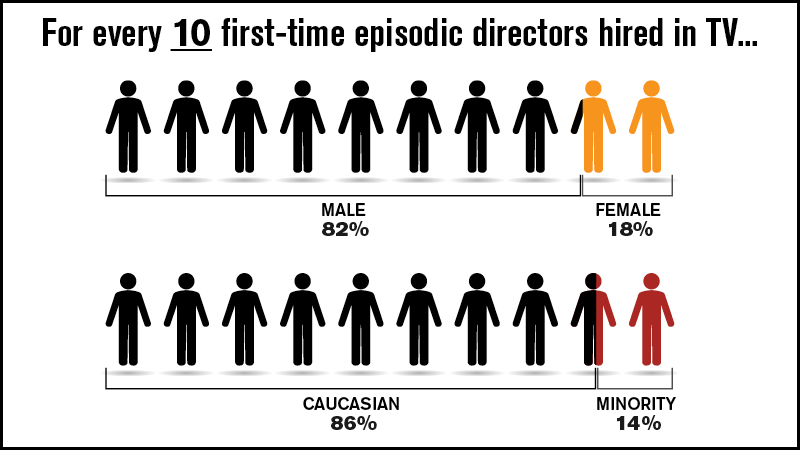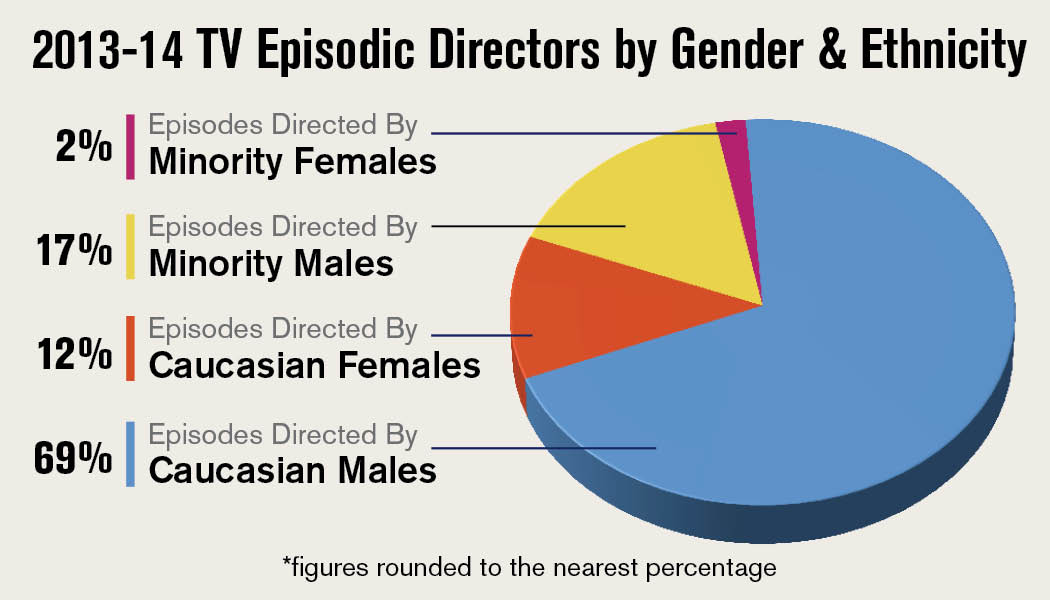- Hiring of Minority First-Time TV Directors Remains Flat; Hiring of Women Gaining Slightly
- TV Director Development Cultivates Diversity
In the 2015-16 season, 153 directors who had never worked in episodic television were hired by employers (studios, networks and executive producers) – 15% were ethnic minorities, and 23% were women. A comparison of season-by-season data shows that hiring of minority first-time TV directors has remained flat over the past seven seasons. At the same time, there was a slight upward trend in the season-by-season hiring of women first-time directors – though it has fluctuated within the same range since 2012. For example, in the last three years alone, hiring of women first-time TV directors fell from 23% to 16%, then rose back up to 23%.
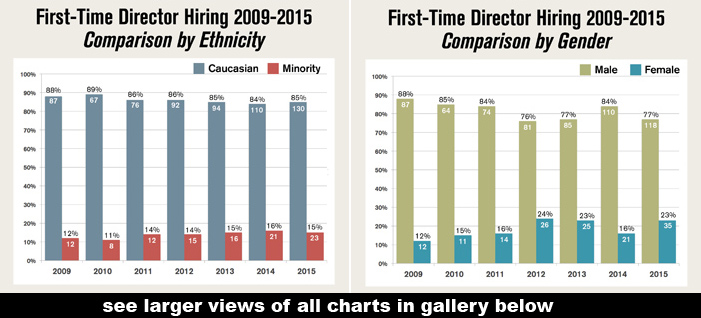 When examining the data by season, it is important to note the small group size, which is more sensitive to fluctuation. With just 99 total first-time directors in 2009-10, and 153 in 2015-16, a handful of individual hires can impact the percentage in either direction. In aggregate, the study revealed that 81% (619) of all first-time episodic directors during the seven-year span were male and only 19% (144) were female; 86% (656) were Caucasian while just 14% (107) were minority directors.
When examining the data by season, it is important to note the small group size, which is more sensitive to fluctuation. With just 99 total first-time directors in 2009-10, and 153 in 2015-16, a handful of individual hires can impact the percentage in either direction. In aggregate, the study revealed that 81% (619) of all first-time episodic directors during the seven-year span were male and only 19% (144) were female; 86% (656) were Caucasian while just 14% (107) were minority directors.
“To change the hiring pool, you have to change the pipeline. Year after year when we put out our TV director diversity report, the media and public are stunned that the numbers remain virtually the same,” said Bethany Rooney, co-chair of the DGA Diversity Task Force. “But how can it change when employers hand out so many first-time director assignments as perks? If they were serious about inclusion, they would commit to do two simple things: First, look around and see that there’s already a sizable group of experienced women and minority directors ready to work and poised for success – and they would hire them. And second, they would more carefully consider these first-time directing jobs, and – with an eye toward director career development. In the end it's all about who is a good director.
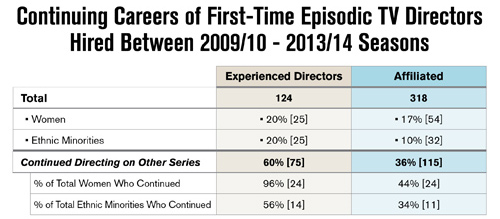 The study also followed the career trajectories of first-time directors initially hired in the 2009/10 – 2013/14 seasons, tracking whether they were subsequently hired for directing jobs (outside of the series for which they were originally hired) through the 2015-16 season. The purpose of this closer look was to determine which new entrants to the pipeline were moving on to develop TV directing careers. In this group, 26% (124) of the first-time directors were “experienced directors,” meaning that they were already directors in other categories (e.g. feature films, commercials, online). The majority – 66% (318) – were “affiliated” hires, meaning they were individuals already affiliated with the series for which they were hired (as actors, crew, editors, producers, writers, etc.).
The study also followed the career trajectories of first-time directors initially hired in the 2009/10 – 2013/14 seasons, tracking whether they were subsequently hired for directing jobs (outside of the series for which they were originally hired) through the 2015-16 season. The purpose of this closer look was to determine which new entrants to the pipeline were moving on to develop TV directing careers. In this group, 26% (124) of the first-time directors were “experienced directors,” meaning that they were already directors in other categories (e.g. feature films, commercials, online). The majority – 66% (318) – were “affiliated” hires, meaning they were individuals already affiliated with the series for which they were hired (as actors, crew, editors, producers, writers, etc.).
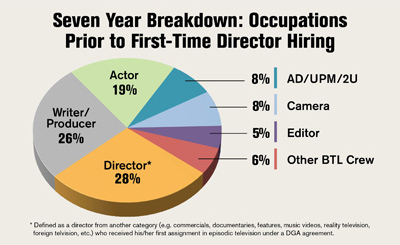 The data showed that not only were the experienced directors more likely to develop TV-directing careers, they were more diverse. Additionally, women and ethnic minorities in this category exhibited a far greater degree of success than their affiliated counterparts – with 96% of women (24 out of 25) and 56% of ethnic minorities going on to direct on other series, compared with just 44% of women and 34% of ethnic minorities in the affiliated group:
The data showed that not only were the experienced directors more likely to develop TV-directing careers, they were more diverse. Additionally, women and ethnic minorities in this category exhibited a far greater degree of success than their affiliated counterparts – with 96% of women (24 out of 25) and 56% of ethnic minorities going on to direct on other series, compared with just 44% of women and 34% of ethnic minorities in the affiliated group:
“Employers should be thinking about their role in shaping and developing the talent pool,” added DGA Diversity Task Force co-chair Todd Holland. “After all, it’s the Platinum Age of television. The profile of the television director is rising as series rely more on stylistic and visual choices in storytelling, and audiences demand greater inclusion – on both sides of the camera.”
The DGA compiled the statistics for this report based on data from the 2009/10 – 2015/16 television seasons. The data excludes pilots. In cases where a first-time episodic director could have been assigned to more than one previous employment category, the DGA placed the director in the category for which he or she is most well-known. All figures were rounded to the nearest percentage.
